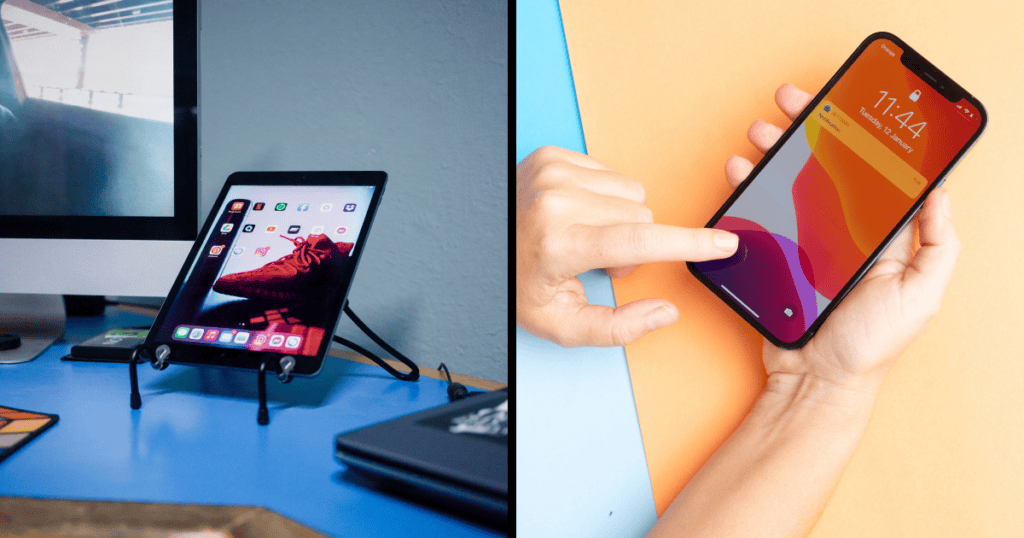The recent report reveals that iPad users show considerably higher retention and reuse rates compared to iPhone users. Data indicates that 67% of repeat iPad buyers retain their old devices, while only 41% of iPhone buyers do the same. iPads tend to last longer and have higher resale values, making them a preferred choice among consumers. This trend underscores the enduring appeal and practicality of iPads over iPhones. The findings shed light on the interesting dynamics between these Apple devices, showcasing intriguing patterns in user behavior and device longevity.
Retention Rates of iPads Vs iPhones
The report underscores the notable disparity in retention rates between iPads and iPhones, emphasizing the superior longevity and retained value of Apple’s tablet devices in comparison to their smartphone counterparts. Data from the study reveals that in the twelve months ending March 2024, 67% of repeat iPad buyers retained their old iPads, while only 41% of iPhone buyers did the same.
Additionally, around one-third of old iPads are passed down, a markedly higher rate than the mere 10% of old iPhones that are. This trend is further exemplified by the fact that less than 10% of iPad upgraders opt to trade in their device, showcasing how users value retaining their old iPads for continued use, underlining the sustained value proposition of iPads over time.
Depreciation Data for Apple Devices
Comparing the depreciation rates of various tech giants’ devices reveals a stark contrast in value retention over time. Apple’s 2021 iPad Pro 11 3rd Gen depreciated by 56.7% since its launch, indicating a lower retention rate compared to iPhones like the 2021 iPhone 13 Pro Max, which experienced a 44.6% depreciation. This data underscores that iPads tend to hold their value better and are more likely to be reused over time within the consumer market.
Contrastingly, Google’s 2016 Pixel XL faced a substantial 98.6% depreciation, while Samsung’s 2018 Tab A 10.5 saw a 94.8% decline in value. The OnePlus 9 Pro, launched in 2021, had a depreciation rate of 79.3%, positioning it between Apple and Google regarding value retention.
Consumer Preference for Tablet Devices
When considering consumer preference for tablet devices, the extended retention and reuse patterns of iPads compared to iPhones underscore a notable trend in the tech market.
The data reveals that nearly two-thirds of new iPad buyers have retained their old devices for at least two years, a much higher percentage compared to only 41% of iPhone buyers.
Moreover, about 40% of recent iPad purchasers have kept their tablets for three or more years before considering an upgrade, indicating a preference for longer retention periods among tablet users.
The tendency for iPads to be passed down within families, with one-third finding new users, highlights the perceived value and utility that users place on these devices over time.
This trend showcases the enduring appeal and practicality of iPads in the consumer market.
Durability of Apple’s Tablet Devices
Demonstrating superior resilience and lasting quality, Apple’s tablet devices have consistently outperformed their smartphone counterparts when it comes to durability and longevity. iPads are not only retained but also repurposed more frequently by users, highlighting their robust build and extended lifespan. The durability of iPads is a key factor in their higher resale values and continued usability over time. Users tend to hold onto their iPads for more extended periods due to the devices’ lasting quality and functionality. This emphasis on durability and longevity sets Apple’s tablet devices apart from their smartphone offerings, making them a preferred choice for individuals seeking a reliable and long-lasting technological companion.
| Durability | Longevity |
|---|---|
| Robust build | Extended lifespan |
| Higher resale values | Continued usability |
| Lasting quality | Reliable technological companion |
Longevity of iPads in Market
How does the longevity of iPads in the market reflect their sustained value and utility for users over time?
The data reveals a striking trend where iPads are retained and reused more effectively than iPhones, with 67% of repeat iPad buyers holding onto their old devices compared to only 41% of iPhone buyers in the same period.
Notably, about one-third of old iPads are passed down to others, highlighting their enduring appeal and functionality.
Users prioritize keeping their iPads rather than selling them, underscoring the retained value of these devices.
This emphasis on retaining and repurposing old iPads demonstrates their lasting usefulness and versatility, showcasing the extended lifespan and value proposition of Apple’s tablet offerings in the consumer market.
Comparison of iPad and iPhone Reuse
The comparison of iPad and iPhone reuse patterns reveals distinct user behaviors and preferences regarding the retention and passing down of older devices. According to the data, 67% of repeat iPad buyers retained their old iPads, a notably higher percentage compared to only 41% of iPhone buyers.
Additionally, one-third of old iPads are handed down, while only about 10% of old iPhones are passed on. Surprisingly, 23% of iPad upgraders replaced their device due to loss, theft, or damage, in contrast to 6% of iPhone upgraders.
Furthermore, less than 10% of iPad upgraders trade in their old device, while nearly half of iPhone upgraders do. These statistics emphasize the higher tendency for iPad users to reuse and retain their devices over time.
Value Retention Trends Over Time
Additionally, a notable trend in value retention over time for iPads reveals a higher rate of retention and reuse compared to iPhones. The data from the report indicates that 67% of repeat iPad buyers retained their old iPads, while only 41% of iPhone buyers did the same.
Approximately one-third of old iPads are handed down, showcasing the perceived value and utility of these devices even after upgrades. Furthermore, a significant portion of iPad upgraders (23%) replaced their devices due to loss, theft, or damage, indicating that users often continue using their old iPads rather than disposing of them.
This trend underscores the lasting value and durability of iPads in the consumer market, contributing to their higher retention and reuse rates over time.
Significance of iPad Resale Value
Highlighting the economic impact of iPad resale value underscores the device’s enduring appeal and practicality in the consumer electronics market.
The higher resale value of iPads compared to iPhones plays a significant role in their greater retention and reuse. Users perceive the resale value of iPads as a compelling reason to hold onto them for longer periods, effectively extending their lifespan.
This encourages users to repurpose older iPads within their families rather than discarding them. The retained value of iPads also serves as an incentive for users to resist frequent upgrades, contributing to a reduced turnover rate for these devices.
Implications for Apple Device Owners
Implications for Apple device owners become evident through the significant trend of extended iPad ownership and the preference for retaining and repurposing older models. This trend has several implications for Apple device owners:
- Long-Term Value: iPads tend to hold their value better than iPhones, making them a more sustainable investment for consumers.
- Family Sharing: The high rate of old iPads finding new homes within families indicates their versatility and desirability for various user groups.
- Sustainability: The choice to retain and repurpose iPads showcases a commitment to sustainability and reducing electronic waste, aligning with Apple’s environmental goals.
MacReview verdict
To sum up, the data underscores a clear disparity in the depreciation rates between Apple’s iPad and iPhone models, with iPads exhibiting higher value retention and reuse potential.
As consumers seek devices with longevity and durability, the enduring appeal of iPads in the market becomes evident.
Consider this: How does the resilience of iPads not only reflect their technological prowess but also their ability to withstand the test of time in a rapidly evolving consumer electronics landscape?




